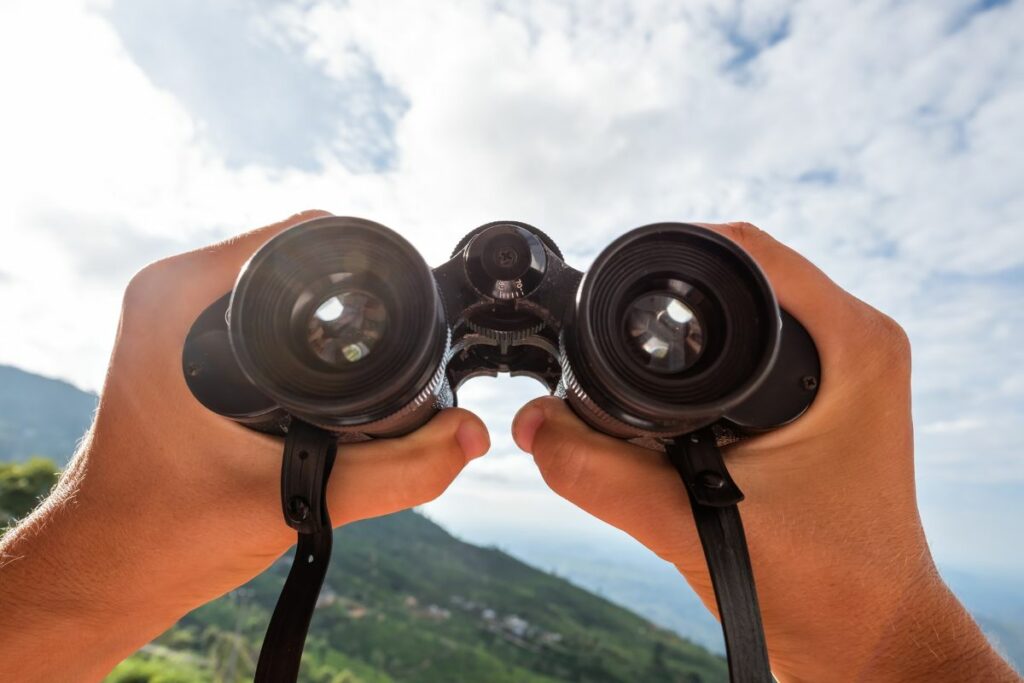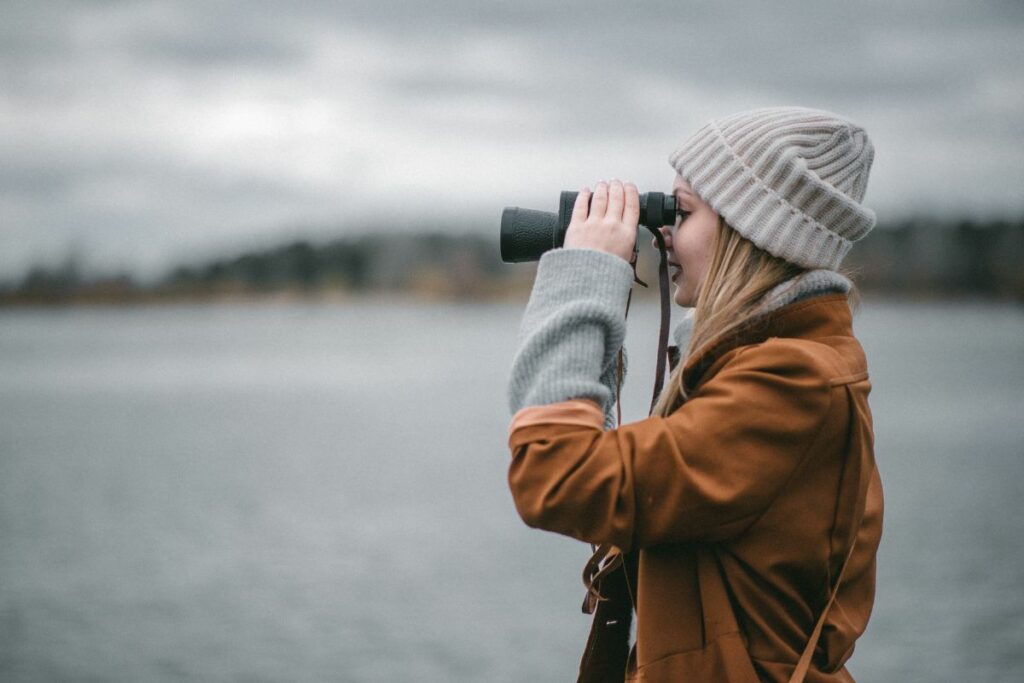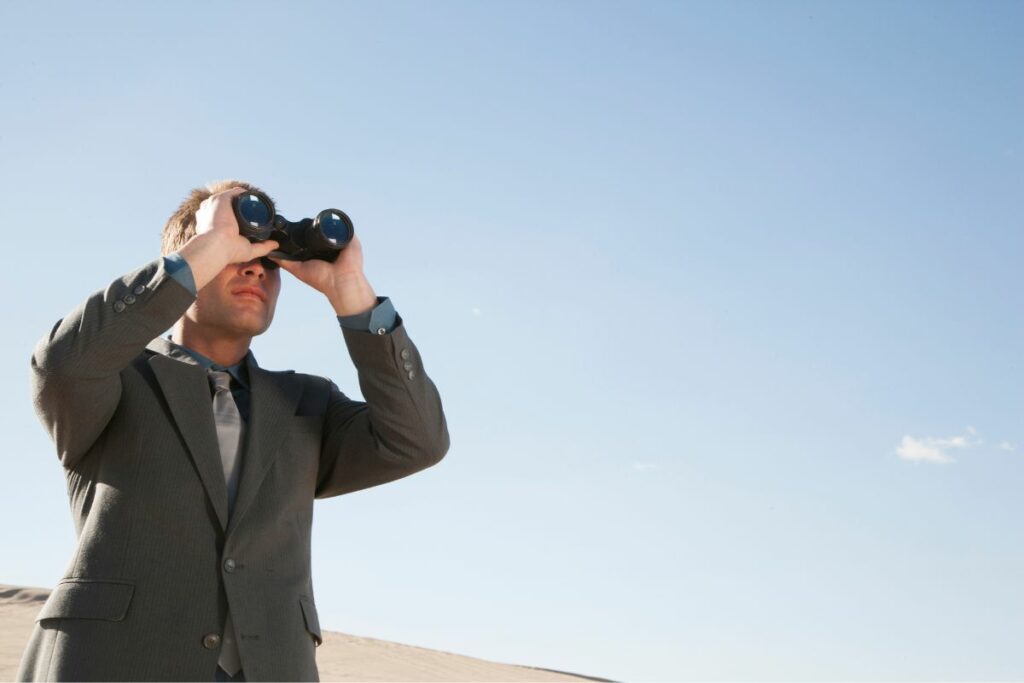As an Amazon Associate, we earn from qualifying purchases with no additional costs for you.
Binoculars are an important piece of equipment for bird watchers. Most birds are seen some distance away, and to identify them by species means being able to see their characteristic features. This is often not possible unless you can magnify the image of the bird using binoculars or a spotting scope.
10 x 50 binoculars magnify objects by ten times, which makes them ideal for most birdwatching situations. These binoculars have wide-diameter lenses that gather a lot of light, making bird watching in low light easier. 10 x 50 binoculars are best for intermediate bird watchers.
A pair of good-quality 10 x 50 binoculars can be good for bird watching, depending on conditions. The wider field of view lets in more light, and the 10 times magnification is useful for birding. However, the binoculars can be too heavy for some people to carry around all day.
TIP: If you want to check out the best pair of binoculars for bird watching, we recommend a pair of waterproof and fog-proof 8 x 42 binoculars like the Celestron – Outland X 8×42 Binoculars (Amazon link).
Are 12 X 50 Binoculars Good For Bird Watching?
A good pair of 12 x 50 binoculars is useful when you are trying to see birds that are some distance away from you. For example, these binoculars are helpful if you want to identify birds that are some distance from you on a reservoir or on a sand bank far out from the beach.
The 12-times binoculars have a high magnification that works well for seeing the field marks of species that are quite far away. The binoculars bring objects 12 times closer.
While these can be useful binoculars for looking at pelagic species, waterfowl, or shorebirds, they are bulky and difficult to use to track a bird while it is in flight. This means it may be difficult to identify aerial species like swallows, martins, and swifts.
Rather, the 12 x 50 can be used instead of a spotting scope to view birds that are at a distance, where smaller binoculars will not help much. The 12 x 50 are heavier than smaller binoculars, making holding them tiresome.
Some recommend using a tripod if using these binoculars as a spotting scope or in place of a telescope for night viewing. The tripod will hold the binoculars steady, making it much easier to avoid the shakiness of the image you see.
Birding In Dense Woodlands
The 12 x 50 binoculars are also probably not a good choice if you are birding in dense woodlands because you cannot focus up close. Many woodland birds will be quite close, so for these, you need a different type of binoculars with a smaller magnification number.
Another aspect of forest and woodland birding, which you may find frustrating, is that you hear more than you see. For these types of birds, it is helpful to be familiar with the songs and calls of species you are likely to see.
How Far Can You See With 12 X 50 Binoculars?
You can see objects at about 1000 meters away with 12 x 50 binoculars. The distance and wide field of view are reasons that these binoculars can work well for both bird watching and astronomical investigations, like looking at the moon. The large 50 mm diameter of the lenses also lets in more light, making these good for low-light conditions or for nocturnal viewing.
10 X 50 Versus 7 X 50 Binoculars For Birding
Binoculars that are 10 x 50 are a better bet than the 7 x 50 binoculars for bird watching because the magnification is higher. A 7 x 50 pair of binoculars only magnifies an object seven times compared to a 10 x 50 pair, which magnifies an object ten times.
Birders recommend 7 x 50 for beginner birders as they do offer a wide field of view since the large-diameter lenses gather a lot of light. The extra light is helpful on overcast days or late in the day when light levels are quite low.
It is also easier to find the bird with a 50 mm diameter lens versus, say, a 20 mm diameter lens. This is useful for inexperienced bird watchers who have not had a lot of practice locating a bird in the field.
The 7 x 50 binoculars are a good general-purpose type of binoculars for wildlife viewing in general, so if you visit a game park or even want to look at the stars and moon at night.
The 7 x 50 binoculars are also often priced less than the higher magnification binoculars. This can help if you are on a budget and need some type of optics to help you with your bird watching.
10 X 50 Versus 12 X 50 Binoculars For Birding
In general, bird watchers prefer 10 x 50 binoculars to 12 x 50. Even though you may assume higher magnification is better, this is not always the case. At too high a magnification, you will struggle to see birds that are closer to you.
The other problem is that image stability is reduced at higher magnifications, making it more difficult to see clearly because even small trembling of your hands affects the image.
The 10 x 50 may be a better option for general bird watching, while the 12 x 50 is better for looking at more distant objects, including birds. Both pairs of binoculars are quite heavy normally because of the larger field of view.
You can, however, get 10 x 50s that are constructed to be more lightweight. You just need to do your research and ask fellow birders if they have a good pair and where they purchased their binoculars from.
10 X 50 Versus 20 X 50 Binoculars For Birding
Most bird watchers will prefer a 10 x 50 to a 20 x 50 pair of binoculars. A 20 x 50 magnifies greatly, but it is heavy and difficult to hold steady. You will very likely end up with a much shakier image using a 20 x 50 versus a 10 x 50.
You could use a 20 x 50 mounted on a tripod for stability, where you could use this as a spotting scope to look at distant shorebirds and waterfowl.
Spotting Scopes
Spotting scopes magnify from 20 times and up. A spotting scope is really just a small telescope that you can use to look at objects that are far away and not easily viewed with most binoculars.
You will usually see spotting scopes being used when a bird or group of birds is far away and cannot be identified using conventional binoculars.
Expert birders may have spotting scopes that they take with on birding trips. If you go on certain organized bird trips of the Audubon Society, you may be able to have access to a spotting scope. This is used to look for birds far out on a sand spit in the sea or far out on the surface of a dam.
A big disadvantage with spotting scopes is that they are more expensive than a pair of binoculars and are difficult to carry around with you as they are large and bulky. You also definitely need a tripod to mount the scope on if you hope to have any success in using it.
Best 12 X 50 Binoculars For Bird Watching
There are many factors that influence how good a pair of binoculars are. You should consider several features when choosing a pair of binoculars. Features like waterproofing and fogproofing are especially important since not having these features means you risk damage to the binoculars if conditions in the field deteriorate.
The coating on the lenses is also important in affecting how clear an image you get and how long your binoculars will last for.
There are a number of brands of binoculars that are popular including Bushnell, Nikon, Celestron, Tasco, and more. The best-rated of these is the Celestron Nature DX ED 12×50 (Amazon link), which has multi-coated optics and is also waterproof and fogproof.
You do need to realize that binoculars vary greatly in price. Binoculars, in general, can vary anywhere from $19 to $200 or more. It is crucial to realize that usually, the better-quality binoculars will be the more expensive ones.
You need to take into account your budget along with knowing what features you desire in your new pair of binoculars.
Although beginner bird watchers don’t need a top-of-the-line pair when starting out, they eventually will want to invest in a better pair of binoculars. It is worth doing your research and even asking birding colleagues and friends what pair of binoculars they have to give you an idea of what would work best for you.
My Favourite Equipment for Bird Watching
Bird watching is one of the least expensive hobbies out there, but you still need some equipment to get the most out of it.
The essential equipment to start bird watching is a pair of binoculars. My preference is 8 X 42 binoculars. The number 8 is how much the magnification is, while 42 is the field of view in millimeters of the lenses.
A pair of waterproof and fog-proof 8 x 42 binoculars like the Celestron – Outland X 8×42 Binoculars on Amazon is an excellent choice for both beginners and experts.
In time, you can choose more expensive models and also opt to buy a spotting scope like the Celestron Ultima 80 on Amazon.
These are a lot more expensive compared with binoculars though, so if you are only a beginner, start with binoculars first. A spotting scope is only helpful for birds far away, such as out on a pond or seashore.
There are a few rules or guidelines you should abide by as an ethical birder. These are listed below.
- Do not enter private lands without prior permission from landowners.
- Follow all the rules in refuges and reserves, including cleaning up any garbage from your campsite.
- Do not disturb birds on nests.
- Do not use apps and play songs to call up birds when they are hungry, tired, and breeding during spring and summer.
Conclusion
The 10 x 50 binoculars are a good choice of binoculars for many birders but they are less stable than binoculars of a lower magnification. The higher field of view is advantageous in low light conditions, though.
The 12 x 50 binoculars are good for looking at birds that are far away. The 20 x 50 type of binoculars works best on a tripod instead of a spotting scope.
A 7 x 50 pair is good for beginners who are just starting out in bird watching. Ultimately, the choice is yours, but many birders have had a lot of success using a 10 x 50 pair of binoculars.
TIP: Check out my recommended products if you are looking for the best and trusted equipment for birdwatching in the wild or on your backyard (Amazon link):




